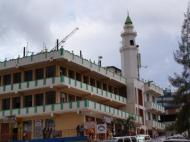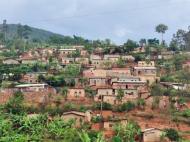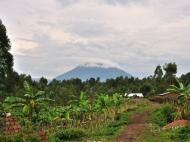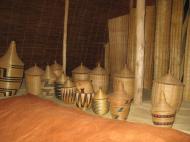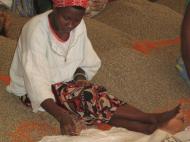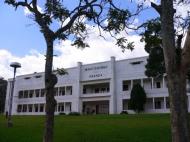The Republic of Rwanda 2009
EXPEDITION OF THE INSTITUTE FOR AFRICAN STUDIES IN THE REPUBLIC OF RWANDA
On October 19 – November 1, 2009 a team of Russian Cultural Anthropologists from the Institute for African Studies conducted fieldwork in the Republic of Rwanda (in the cities of Gisenyi, Huye-Butare, Kigali, Nyanza). The research's problematics included a comparative research of the images of Russia, China, European and Middle Eastern countries. The study was supported by the Russian Foundation for Humanitarian Studies (project 09-01-00032е/р) and by the Embassy of the Russian Federation in the Republic of Rwanda. The stuff of the expedition headed by Dmitri M. Bondarenko included: Anastasia A. Banschikova, Ekaterina B. Deminsteva, Tatiana V. Evgenyeva, Nikolay N. Firsov, and Alexander A. Panov.
The fieldwork in Rwanda was a continuation of the research projects: “The Image of Contemporary Russia in African Countries: Formation and Specific Features” and “Russia and Islam: A Civilization Dialog” (RFHS projects 06-01-02083а and 06-01-02062а respectively), began with similar expeditions to the Federal Republic of Nigeria in 2006, the United Republic of Tanzania in 2007, and the Republic of Benin in 2008, as well as of two earlier expeditions to Tanzania, in 2003 and 2005 (see, for example, “Christian-Muslim Relations in Contemporary Tanzania", Moscow, 2005; “Inter-racial and Inter-ethnical Relations in Contemporary Tanzania", Moscow, 2008; both in Russian). Elaboration of these projects presupposes the study of preconditions of contemporary Russia’s image formation in connection with the history of the Soviet-African and Russian-African relations (including the latter's present-day condition); finding out the specific features of this image; searching the possibilities of its improvement, in particular in comparison with the images of other countries.
In the course of the research 33structured and semi-structured interviews with representatives of Rwandan intellectual, cultural, business, and political elite, i.e. with people capable of forming and transforming the image of Russia in the country’s populace mass-consciousness, was conducted. Each interview consisted of 10 questions, took about 40 minutes and was taped. The plan of the interview included questions posed while interviewing in the previous expeditions, as well as new ones concerning the new aspect of the research – the image of Russia in direct comparison with images of the USA, China, European states, and Middle Eastern countries. Besides, a photo-archive was composed.
The information got during four expeditions of 2006 – 2009 to the countries with various attitudes to Russia (due mostly to the fact that their relations with the Soviet Union differed greatly) allows to receive a complex, complicated, and sometimes contradictory picture of the image of Russia and her citizens in the eyes of the continent's population.
Answering the question about the ways of formation of Russia’s positive image in Rwanda, the respondents gave quite specific answers that differed from the opinions expressed most often in other countries. In general, Rwandans know about Russia less than people from Nigeria, Tanzania, and Benin, because of much weaker political, economic and cultural ties between Russia and their country; Russia is absent in Rwanda’s mass-media and information sphere. The influence of such countries as the USA, Germany, Belgium, Great Britain, and China is visible in Rwanda, they help the country economically, conduct humanitarian missions, and enjoy a generally positive image among citizens.
The members of the research team would like to express deep gratitude to His Excellency the Ambassador of the Russian Federation to the Republic of Rwanda Mirgayas M. Shirinsky, the Second Secretary of the Embassy Dr. Mikhail D. Nikitin, and all the Embassy stuff members.









